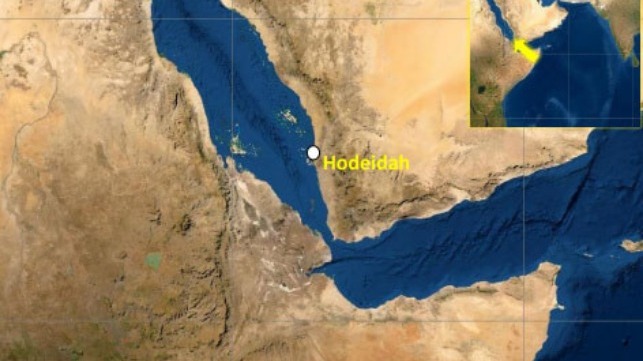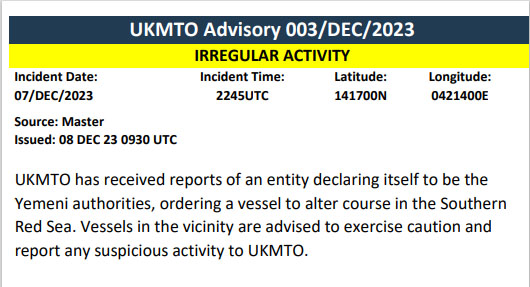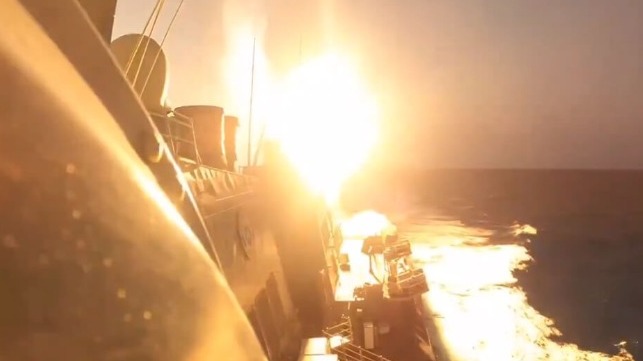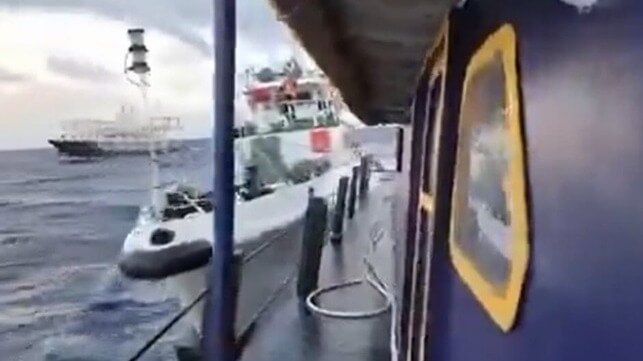UK Warns of “Yemeni Authorities” Contacting Vessels in the Red Sea

Unidentified individuals claiming to the “Yemeni authorities” appear to be attempting to commander vessels sailing in the southern Red Sea area by issuing commands over the radio. While the efforts have not been backed by any direct assault on the ships, warnings are being repeated for vessels to exercise caution while the U.S. authorities have now directly associated the attacks with the regime in Iran.
The UK Maritime Trade Organization (UKMTO) which coordinates between the Royal Navy and the commercial shipping industry, issued a new safety alert on Friday, December 8, warning of new efforts by unknown individuals in Yemen. They are advising caution while requesting reports on any suspicious activity in the region.
According to the alert, the latest incident took place late on December 7 when an unidentified vessel sailing in the southern Red Sea near the port of Hodeidah in Houthi-controlled regions of Yemen was contacted. Individuals declaring to be the “Yemeni authorities” reportedly ordered a vessel to “alter course.” The vessel appears to have ignored the command and proceeded without further incident, but the UK authorities are warning of this tactic.
It is not the first time this has been reported and so far, there has been no follow-up to the radioed commands. After the three merchant vessels were attacked on Sunday, December 3, there were reports that one of the vessels received a similar contact also ordering the vessel to alter course. The reports said in that instance the vessel claimed to have been dealing with damage from the attack and unable to change course. The owners of the ships that came under attack later issued statements saying that their vessels had not suffered significant damage and had been able to continue on their voyages.

U.S. authorities however did report further drone sightings including a downing of another drone that was approaching the area near a U.S. destroyer. Officials said the captain of the USS Mason decided to down the drone because of its position, but it was unclear if the drone was attempting to target the warship.
S&P Global reported today that two shipping companies, Zodiac Maritime and Eastern Pacific Shipping, both with Israeli owners, have however decided to divert their vessels. Neither company responded to S&P’s requests for information, but they believe that the companies are rerouting gas carriers away from the Red Sea.
All of this came as Reuters was reporting that United States officials had publicly stated that Iran is involved in the planning and execution of drone and missile attacks by the Houthi rebels. Security advisers to President Joe Biden would not rule out direct U.S. actions against the Houthis if the attacks on civilian shipping continued.
“The Houthis continue to receive funding and support from Iran, and the result is unsurprising: unprovoked attacks on civilian infrastructure and commercial shipping, disrupting maritime security and threatening international commercial trade,” said U.S. Under Secretary of the Treasury for Terrorism and Financial Intelligence Brian Nelson.
On Thursday, the U.S. Department of the Treasury’s Office of Foreign Assets Control (OFAC) used counterterrorism regulations to sanction 13 individuals and entities that the U.S. said were responsible for providing tens of millions of dollars of foreign currency to the Houthis in Yemen. They accused the individuals of using a complex network of exchange houses to sell Iranian commodities and funnel money to the rebels. The U.S. vowed to continue to disrupt the financial activities that “enable these destabilizing activities.”
Discussions are also reported to be continuing about expanding the current multinational task force operating in the Persian Gulf region and the Indian Ocean to encompass more areas including the Red Sea. There are also reports that convoys have been discussed as a means of providing greater security to commercial vessels sailing in the Red Sea and transiting the Bab El Mandeb Strait off the coast of Yemen.
French Frigate Shoots Down Two Drones Over Red Sea

On Saturday night, a French warship shot down two drones over the Red Sea, adding to a growing list of encounters between Western warships and UAVs launched from Yemen.
In a statement, the French general staff reported that the frigate Languedoc identified and destroyed "two identified threats" that were "headed straight towards her." The intercepts occured several hours apart, first at 2300 hours local time and then again at 0130 hours Sunday.
The encounter occurred about 60 nm off the coast of Hodeidah, Yemen, far from any shore. Yemen's Houthi rebel faction is known to possess Iranian-built Samad, Shahed and Ababil suicide drones, which have more than adequate range to reach across the Red Sea. These are relatively low-tech, inexpensive devices: the estimated price of a Shahed-136 is in the range of $20,000.
A video released by the U.S. Navy on Saturday shows that the drone shootdowns are an expensive endeavor. The video, produced by the crew of the destroyer USS Carney, shows the ship launching multiple SM-2 or Evolved Sea Sparrow missiles from its VLS cell launchers. Depending on purchase batch and missile type, these rounds are priced at about $1.0-2.1 million, about 50-100 times the price of a Shahed-136.
The White House has said that it wants to form a new coalition of international partners to assure maritime security in the region. The new group would draw on the membership of the American-led Combined Maritime Forces coalition, and White House National Security Council spokesman John Kirby said last week there have been conversations with "several key partners that are interested in coming aboard." It would be the third international maritime security partnership for the Red Sea and Gulf of Aden, in addition to the EU-led EUNAVFOR Operation Atalanta and the CMF's existing CTF-153.
The U.S. Treasury has also announced sanctions on a network of Iranian-backed money launderers who have funneled funds to the Houthi movement. However, the White House has stopped short of re-designating the Houthi faction as a terrorist organization. The Houthi rebels were on the terrorist list until February 2021, when the Biden administration removed them.
In a statement Saturday, a Houthi spokesperson warned that all Israel-bound ships may be subject to attacks.
“If Gaza does not receive the food and medicines it needs, all ships in the Red Sea bound for Israeli ports, regardless of their nationality, will become a target for our armed forces,”
The Houthi group continues to hold the car carrier Galaxy Leader and its crewmembers as hostages near the port of Al Salif. Videos produced by Yemeni influencers suggest that the ship has become a tourist attraction, and even young children have been ferried out to visit the seized vessel.
